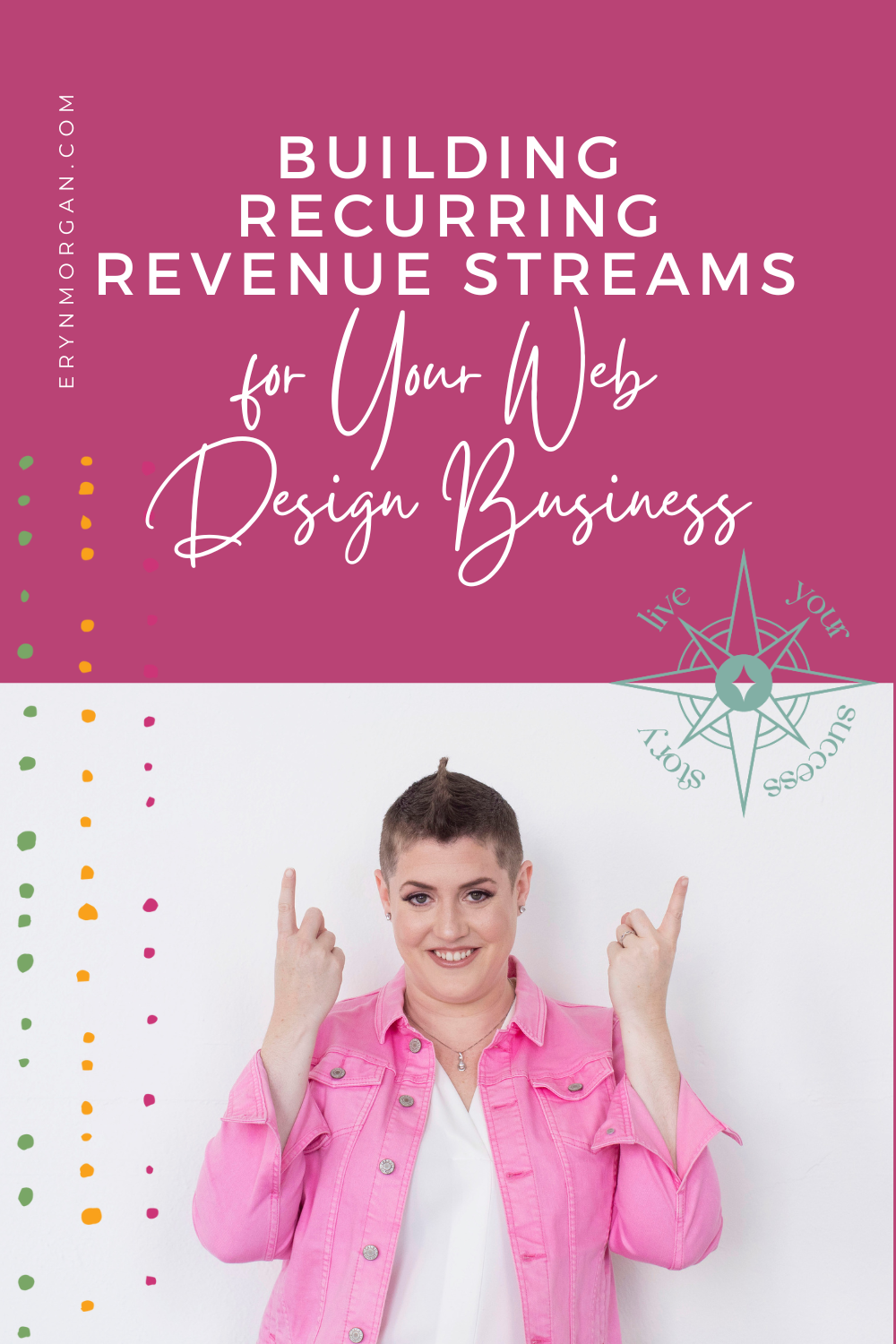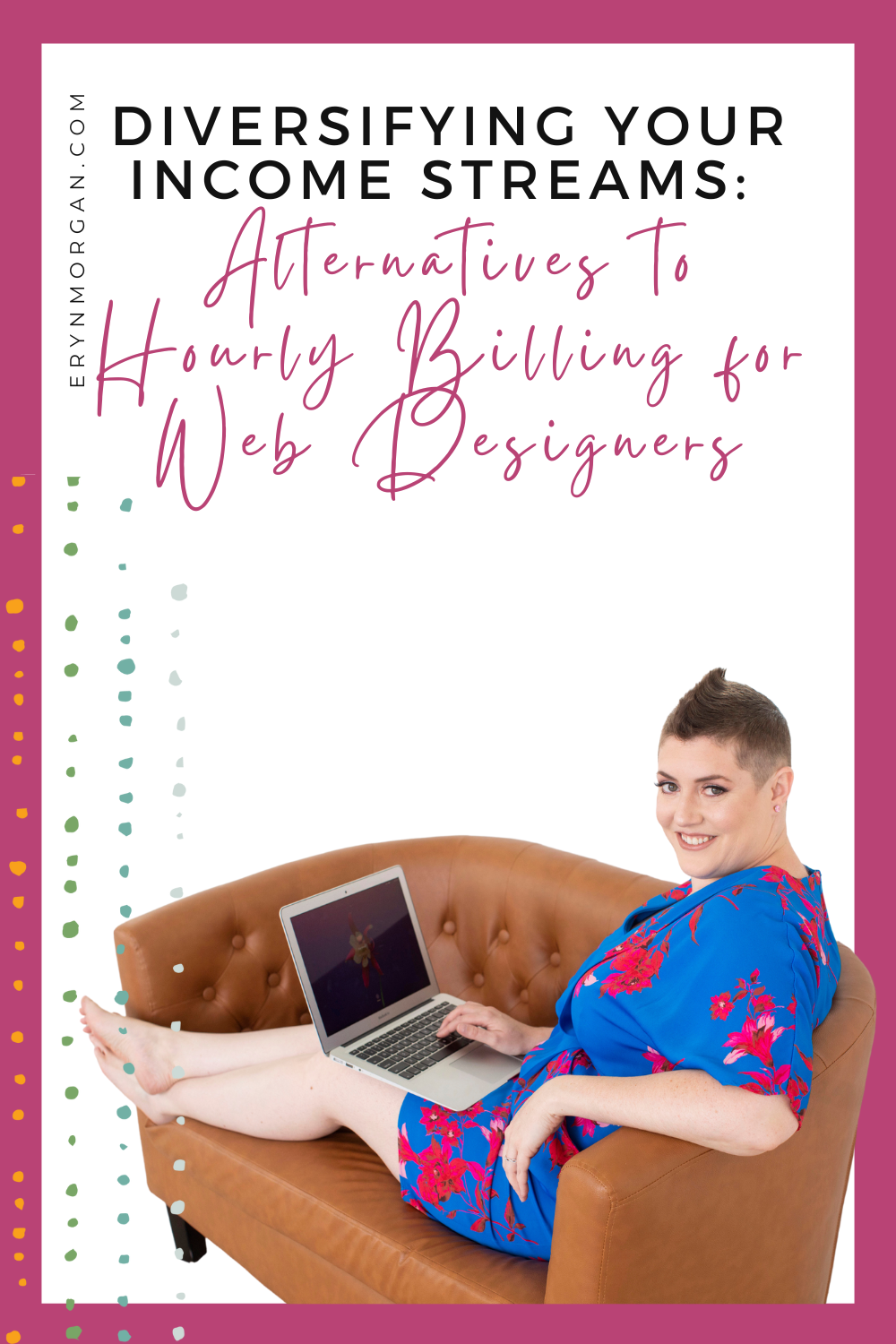You didn’t start your web design business to burn out.
But if you’re like my client Sam and running a creative web design business, you’ve probably had at least one moment where the math just didn’t add up.
Booked out? Yes.
Busy? Constantly.
Bank account? …Not where it should be.
You’re not alone. And you’re not doing it wrong.
But you might be unintentionally scaling a fragile foundation.
This post will show you how to increase profit in web design businesses without working more hours or waiting for a mythical “perfect client” to swoop in and save the day.
We’re going to focus on three levers: pricing, expenses, and efficiency. Pull these, and profit follows.
First: Redefine What Profit Really Means
When Sam came to me, she thought she was profitable. After all, she was booked solid and bringing in revenue.
But she still couldn’t figure out why she felt constantly strapped for cash—and time. Once we zoomed out and redefined what profit actually meant for her, everything shifted.
Let’s get one thing clear: profit isn’t a bonus. It’s the backbone of your business.
Profit is:
- Paying yourself consistently (not just when there’s “extra”)
- Investing in better systems, tools, or support before you’re drowning
- Feeling safe to say no to misaligned clients because the cash cushion is there
- Taking a week off—without scrambling to cover the gap
It’s not greedy. It’s what lets your business breathe. And let’s you breathe and build a life that is fulfilling and meaningful.
So if you want a sustainable, liberating business—we start here finding ways to increase profit in web design.
Lever 1: How to Increase Profit in Web Design Like a Pro (Not a People-Pleaser)
Sam’s original pricing strategy was a classic case of “people-pleaser math.”
She hadn’t raised her rates in years and had no idea what her break-even number actually was.
We ran the numbers together and realized she was undercharging by almost $1,800 per project—and overdelivering by customizing every element for every client.
Let’s get brutally honest: most web designers undercharge.
Not because they aren’t talented.
But because they’re guessing. Or trying to sound “reasonable.” Or just so concerned with getting clients that they’ll “take whatever they can get” when it comes to prices.
Here’s what smart pricing actually considers:
- Your real operating costs (yes, including taxes and tools)
- Your ideal monthly salary (not survival mode scraps)
- The value of the outcomes you deliver (not just time spent)
Step 1: Know Your Break-Even Rate
Add up your annual business expenses and the salary you want to pay yourself each year. Then estimate the number of clients you want to serve in a year.
Divide your total revenue goal (expenses + salary) by that number of clients.
That’s the average price your core package needs to hit to make your business work—without overbooking yourself or burning out.
Now look at your packages.
Sam’s new base package landed at $4,800—not because it “sounded better,” but because it reflected the reality of what it took to deliver excellent work and pay herself properly.
Do they reflect that number?
Sure, you have a few ways you work, and you can’t predict what package each client will buy, but this is about starting with an average.
Step 2: Ditch Hourly. Design for Outcomes.
Hourly billing penalizes efficiency and caps your potential. If you’re already working on packages or using value based pricing, great.
But if you are still working hourly, let’s shift that.
Instead of pricing hourly, price for the result you’ll give your client.
Explore:
- Project-based pricing for defined scopes
- Value based pricing that ties your fee to client ROI or transformation
- Retainers or subscriptions for ongoing support or recurring tasks
You can read more on each of these in our related posts linked above.
But beyond tactics, let’s talk mindset.
Shifting away from hourly isn’t just about math—it’s about identity. Many creatives were taught to equate time with value, or to keep rates “approachable.”
But time is not your product. Results are.
When you decouple your pricing from the clock, you reclaim your earning power. You stop apologizing for being efficient. And you start charging for the change you create, not the hours you log.
Remember: clients care more about what it does than how long it takes.
Lever 2: Cut Hidden Costs Without Cutting Corners
Every dollar you don’t spend is a dollar that stays in your pocket.
But we’re not talking about getting stingy or DIY-ing yourself to exhaustion.
We’re talking about smart cuts that protect your margin without degrading the quality of your client experience.
Start With a Ruthless Audit
- Review every subscription, annual charge, and platform you’re paying for
- Cancel what you don’t use
- Identify overlap: could one tool replace three?
- Consider where you’re keeping something out of emotion, not actual business logic
Now let’s take some clean up actions:
Negotiate Like a Pro
Been paying a software vendor for a while? Ask for a loyalty discount. You’d be surprised how many say yes.
Batch + Bundle for Savings
Could bundling calls on one day reduce context switching (and mental load)? Could a content creation sprint save hours over drip-feeding tasks?
Now connect the dots: does spending fewer hours equal more availability for another project or even for creating a new offer?
Or would more time margin in your calendar just help you boosting profit without raising prices or working more.
Strategic Spending = Strategic Saving
Invest in templates, systems, or a VA if they free you up to do more profitable work. Saving time is saving money.
And if you’re ready to fast-track this entire process, hiring a coach can be one of the highest-leverage investments you make. A great coach doesn’t just help you optimize your current systems—they help you spot revenue opportunities you can’t see, cut inefficiencies you’ve normalized, and build a strategy that accelerates profit without sacrificing your sanity.
That was true for Sam. She had all the raw materials for success, but it wasn’t until we worked together that she saw how much profit she was unintentionally leaking. The clarity, confidence, and systems we created together didn’t just boost her income—they gave her her evenings, her weekends, and her joy back.
Yes, a great coach is an expense.
But it’s one that creates ripple-effect returns—on your income, your confidence, and your time.
Lever 3: Build Efficient Systems (That Still Feel Human)
Efficiency isn’t just about speed. It’s about reducing friction—so you can spend more time in your zone of genius (and less time chasing invoices or reinventing the wheel). And it’s just another way to increase profit in web design.
Standardize the Repeatable
At a minimum, you should have:
- A reusable proposal template
- A repeatable onboarding sequence
- A consistent project timeline structure
Every time you “just figure it out” or create something custom, you’re leaking profit.
Sam was doing this constantly. Her onboarding process alone took over 10 hours per client—every time. By standardizing her proposals, timelines, and onboarding, we reclaimed nearly 30 hours a month.
That’s almost a full workweek back in her calendar.
Automate the Repetitive
- Invoicing
- Scheduling
- Contracts + forms
- Lead capture
Tools like Dubsado, HoneyBook, High Level, or even Zapier can save you hours a week.
No matter the tool, even if it costs money, it’s saving you from time leaks, mistakes, and missing opportunities.
Delegate What Drains You
Hesitant to hire? Start small.
- Bookkeeping
- Admin follow-up
- Design tasks that aren’t your specialty
Even 5 hours off your plate can open up space for higher-value (or higher-paying) work.
Sam delegated her admin follow-up and hired a bookkeeper, which not only freed up her evenings but also helped her stay on top of her financial data—which made future pricing adjustments even easier.
For more: Alternatives to Hourly Billing for Web Designers
Want Help Making This Real and Learning How to Increase Profit in Web Design Businesses?
Sam didn’t need to overhaul her entire business to become profitable.
She just needed a plan, a clear sense of what to prioritize, and someone in her corner who could help her connect the dots and move faster. When we worked together, we didn’t just tweak her pricing or trim her tools. We rebuilt her confidence, created breathing room, and built a system she could sustain.
If you want that kind of transformation—financially and emotionally—I’d love to help.
Book a discovery call: Let’s optimize your pricing, process, and profit—so you can build a business that actually pays you and brings you peace.


